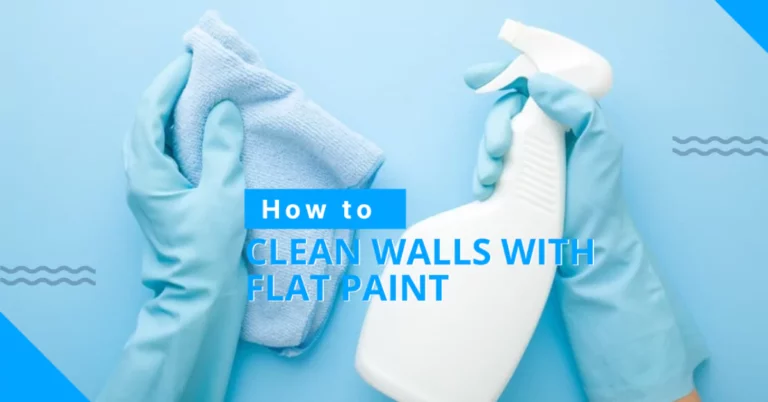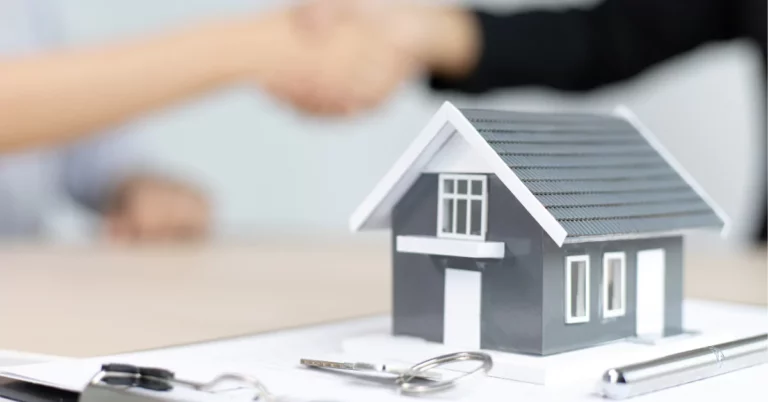How Much Does It Cost to Maintain a Pool?
If you have a pool in your settings, you know how miraculous it can be to cool off with a cold drink on a hot day. However, you are also mindful of how much does it cost to maintain a pool. Maintaining your pool will keep it clean and safe, increase longevity, and help you avoid expensive repairs.
Also Read: How to Clean Walls with Flat Paint – Benefits and Tips
If you are interested to know more about it, keep reading.
Different Types of Pools
There are three main types of pools: inground, above-ground, and saltwater.
Inground Pools
Inground pools are the most popular and expensive type of pool. They are built into the ground and can be customized in shape, size, depth, and design.
Concrete pools are the most durable, customizable, and expensive to install and maintain. They require frequent cleaning and chemical treatments to prevent algae growth and staining. They must also be resurfaced every 10 to 15 years, costing between $4,000 and $12,000.
Vinyl pools are made of flexible liners attached to metal or plastic frames. They require less maintenance and chemicals than concrete pools. However, they are prone to punctures and tears from sharp objects or pets and need to replace the liner every 5 to 10 years, costing between $1,000 and $3,000.
Above-Ground Pools
Above-ground pools are portable pools that sit on top of the ground. They are cheaper in the market and have lower maintenance costs than inground pools, as they have less surface area and water volume.
However, above-ground pools are less durable and attractive than inground pools. They are made of metal or plastic frames with vinyl liners that can rust or tear over time. They also have limited shapes and sizes and can be affected by weather conditions.
Saltwater Pools
Saltwater pools use salt instead of chlorine to sanitize the water. They are not entirely chlorine-free, as they have a salt-chlorine generator that converts salt into chlorine as needed.
However, saltwater pools are more expensive to install than chlorine pools, requiring a salt-chlorine generator that can cost between $1,500 and $2,500. They also require more maintenance than chlorine pools, as the salt can corrode the pool equipment and damage the pool surface.
Also Read: Painting Walls and Trim the Same Color – Benefits & Painting Tips
Factors That Affect Pool Maintenance Costs?
How much does it cost to maintain a pool depends on multiple factors.
- Location: Your area’s climate and weather conditions can affect how often you clean your pool and how much water you need to add or replace due to evaporation or precipitation.
- Pool size: The more extensive your pool, the more water, chemicals, and energy you need to keep it clean and functional.
- Pool type: Your pool’s style and material can affect how much maintenance it requires and how often you need to repair or replace parts.
- Pool usage: The more you use your pool, the more dirt, debris, and bacteria it accumulates, and the more chemicals and cleaning it needs.
How Much Do Pool Cleanings Cost?

Pool cleanings are the most regular and essential part of pool maintenance. They involve:
- Skimming the water’s surface
- Vacuuming the pool floor
- Brushing the pool walls and steps
- Cleaning the filter and skimmer baskets
- Testing and adjusting the water chemistry
- Checking and repairing the pool equipment
Pool cleanings can be done by yourself or by a professional pool service. You will need to buy and store the necessary tools and chemicals and spend time and effort to perform the tasks. The cost of pool cleanings depends on the frequency and the type of service you choose.
Depending on your cleaning plans and budget, you can opt for a weekly, biweekly, monthly, or one-time service. The average cost of pool cleanings is $80 to $150 monthly or $960 to $1,800 annually.
How Much Does Pool Maintenance Cost?
Pool maintenance costs vary depending on the type and frequency of service you choose. You can select a full-service package that covers all aspects of pool maintenance or a partial-service package that covers only some tasks. You can also pay per visit, month, or season.
The average pool maintenance cost is $122 per month or $1,450 per year. A full-service package can cost between $100 and $200 monthly or $1,200 to $2,400 yearly. A partial-service package can cost between $50 and $100 monthly or $600 to $1,200 annually.
Swimming Pool Maintenance Factors
Alkalinity
The alkalinity level measures how well your pool water can resist changes in pH. The ideal alkalinity range for pools is 80 to 120 parts per million (ppm). If the alkalinity is too low, it can cause pH fluctuations, corrosion, and staining. If the alkalinity is too high, it can cause pH fluctuations, scaling, and cloudy water.
Hardness
The hardness level measures how much calcium and magnesium are dissolved in your pool water. The ideal hardness range for pools is 200 to 400 ppm. If the hardness is too low, it can cause corrosion and etching. If the hardness is too high, it can cause scaling and cloudy water.
Chlorine
The chlorine level measures how much sanitizer is in your pool water. Chlorine kills bacteria, algae, and other contaminants that can cause illness or infection. The ideal chlorine range for pools is 1 to 3 ppm.
If the chlorine is too low, it can drive algae growth, cloudy water, and health risks. If the chlorine is too high, it can cause eye irritation, skin dryness, and a chlorine smell.
Cyanuric Acid
The cyanuric acid level measures how much stabilizer is in your pool water. Cyanuric acid protects chlorine from being degraded by sunlight. The ideal cyanuric acid range for pools is 30 to 50 ppm.
If the cyanuric acid is too low, it can cause chlorine loss and algae growth. If the cyanuric acid is too high, it can cause chlorine inefficiency and health risks.
Also Read: Top 10 Masking Tape Wall Paint Design Ideas With Tape
How Much Do Pool Repairs Cost
Pool repairs can range from minor fixes to major overhauls, depending on the type and extent of the damage. The average cost of pool repairs is $665, but it depends on the pool type and size, the repair type, and the complexity.
Some common pool repairs and their average prices are:
- Liner Replacement: $1,000 to $3,000 for vinyl pools, $4,000 to $12,000 for concrete pools
- Filter Replacement: $150 to $800
- Pump Replacement: $700 to $1,500
- Heater Replacement: $1,600 to $3,800
- Leak Detection and Repair: $300 to $500
- Crack Repair: $250 to $800
- Resurfacing: $4,000 to $12,000 for concrete pools, $300 to $550 for fiberglass pools
How Much Do Pool Chemicals Cost?
The cost of pool chemicals depends on the type and amount of chemicals you need and the frequency of use. The average price of pool chemicals is $175 to $750 per year or $15 to $65 per month.
However, this can vary depending on the pool size and type, the water quality and temperature, and usage.
To save money on pool chemicals, you can:
- Test your water regularly and adjust the chemical levels as needed. It will help you avoid overusing or underusing chemicals that cause problems or waste money.
- Use a pool cover when not in use. It will reduce evaporation and contamination that can affect the water balance and require more chemicals.
- Clean your pool frequently and remove debris or organic matter that can introduce bacteria or algae into the water.
- Use alternative sanitizers such as saltwater systems or ozone generators to reduce the need for chlorine and other chemicals.
A Swimming Pool Has Insurance Liabilities
Owning a swimming pool can also affect your homeowner’s insurance policy. A swimming pool is considered an attractive nuisance, attracting children or trespassers who may get injured or drown in your collection.
As a pool owner, you are liable for any accidents or injuries, even if they are not your fault.
To protect yourself from potential lawsuits or medical bills, you should:
- Increase your liability coverage on your homeowner’s insurance policy. The standard liability coverage for most procedures is $100,000, but more is needed to cover a severe pool accident. Increase your range to $300,000 or $500,000, or purchase an umbrella policy that provides additional coverage beyond your homeowner’s policy limits.
- Install safety features around your pool, such as fences, gates, locks, alarms, covers, and signs. These can help prevent unauthorized access and accidents in your pool. You should also follow your area’s local codes and regulations for pool safety.
- Supervise your pool whenever it is in use. It would always help to leave children or pets supervised in and near the pool.
Types of Pool Maintenance Services
Some of the most common types are:
Full-service
This service covers all aspects of pool maintenance, including cleaning, testing, balancing, sanitizing, and repairing. It is the most convenient and comprehensive option but also the most expensive.
A full-service package can cost between $100 and $200 monthly or $1,200 to $2,400 yearly.
Partial-service
This service covers only some aspects of pool maintenance, such as cleaning or testing. It is a more affordable option than full-service, but also less thorough. You must perform some tasks yourself or hire another service provider for them.
A partial-service package can cost between $50 and $100 monthly or $600 to $1,200 yearly.
Chemical-only
This service covers only the chemical treatment of your pool water. It is the cheapest option among the service types but also the least effective. You must perform all the other tasks yourself or hire another service provider.
A chemical-only service can cost between $20 and $50 per month or $240 to $600 annually.
Pay-per-visit
This service allows you to pay only for the visits you need or request. It is a flexible option to customize your pool maintenance schedule and budget. A pay-per-visit service can cost between $75 and $100 per visit.
Frequently Asked Questions (FAQs)
Can I DIY Pool Maintenance?
You can DIY pool maintenance with time, skills, and tools. However, follow the factors before deciding to DIY:
- Cost: DIY pool maintenance may seem cheaper than hiring a professional service, but it also involves buying and storing the necessary equipment and chemicals and paying electricity and water bills.
- Time: DIY pool maintenance can take several hours per week, depending on the size and condition of your pool.
- Quality: DIY pool maintenance may not be as effective and reliable as a professional service, especially if you lack the experience or knowledge to do it properly. You may also risk voiding your warranty or insurance coverage if you do not follow the manufacturer’s instructions or local codes.
How Can I Save Money on Pool Maintenance?
You can save money on pool maintenance by following the steps, such as:
- Maintain regularly: Perform regular maintenance tasks such as skimming, vacuuming, brushing, testing, and balancing pool water.
- Use a pool cover: Use a pool cover when your pool is not in use. It will reduce evaporation and contamination that can affect the water balance and require more chemicals or water.
- Upgrade your equipment: Upgrade your pool equipment to more energy-efficient and durable models that can save you money on electricity and repair costs. For example, you can switch to a variable-speed pump that adjusts its speed and power according to the pool’s needs.
- Use alternative sanitizers: Use alternative sanitizers such as saltwater systems or ozone generators that reduce the need for chlorine and other chemicals. These sanitizers are more gentle on the skin and eyes and have lower chemical costs.
How Often Should I Clean My Pool?
The frequency of pool cleaning depends on several factors, such as:
- Pool type: Different types of pools have different cleaning requirements. For example, inground pools typically need more cleaning than above-ground pools.
- Pool usage: The more you use your pool, the more dirt, debris, and bacteria it accumulates, and the more cleaning it needs.
- Pool location: The location of your pool can affect how much debris or contaminants it collects from its surroundings. For example, if your pool is near trees, shrubs, or grass, it may need more frequent skimming and vacuuming than in an open area.
- Pool season: The season and weather conditions can affect how often you clean your pool. For example, in summer, you may need to clean your pool more often due to higher temperatures and evaporation rates that can affect the water balance and chemistry.
What Should I Do If I Use Too Much Chlorine in My Pool?
Chlorine is a chemical sanitizer that kills bacteria and algae in your pool water. However, using too much chlorine in your pool can cause problems such as eye irritation, skin dryness, chlorine smell, and chlorine lock.
If you use too much chlorine in your pool, you should do the following steps to fix it:
- Test your water
- Stop adding chlorine
- Dilute your water
- Use a neutralizer
- Rebalance your water
Conclusion
Owning a pool can be great fun and relaxation, but it comes with some costs and responsibilities. Pool maintenance is vital for keeping your pool clean and safe, extending its lifespan, and avoiding costly repairs.
How much does it cost to maintain a pool depends on several factors, such as the location, size, type, and usage of your pool. The average price of pool maintenance is $122 per month or $1,450 per year. However, this can vary depending on the type and frequency of service you choose.




